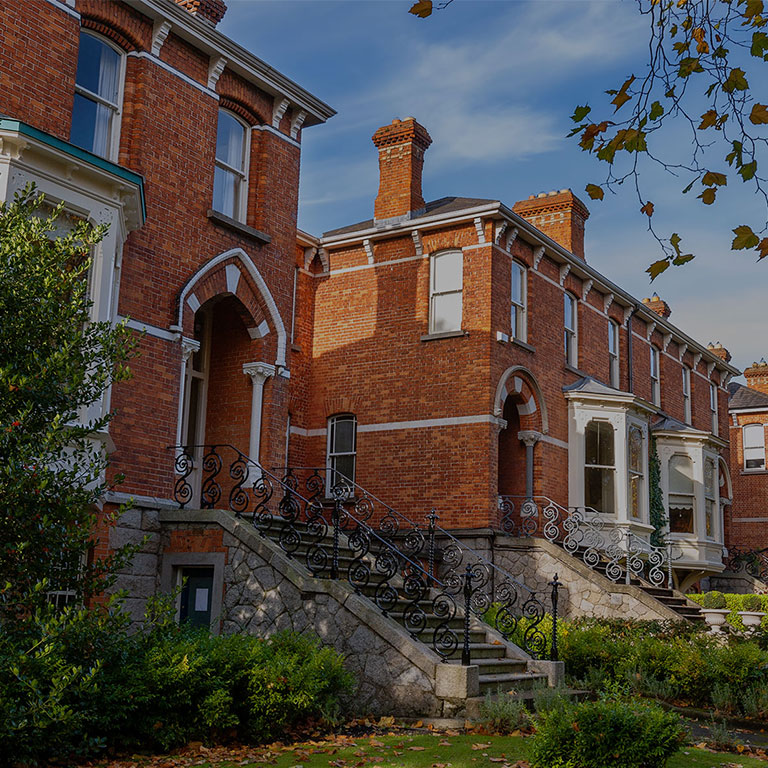
Supply shortages have led to rising house values
Even in a market blighted by extreme volatility, such as Ireland's over the last three decades, the last twelve months will go down as remarkable ones in the history of Ireland's housing market. It's hardly a secret that if you had asked a bubble of economists - I believe that's the right collective noun - 18 months ago what the impact of a global pandemic would be on housing prices, the vast majority (if not every single one) would have said that a pandemic would lower prices and possibly dramatically so.
The logic for such a stance is, at first glance, compelling. The pandemic marks an extraordinary shock to housing demand. Take unemployment, which is estimated to have been above 20% every month since March 2020. Not even in the worst of the post-Celtic Tiger crash - or indeed in the grimmest days of the 1950s or 1980s - did unemployment ever top 20%. So when an economist considers such a shock to demand, they will quite rightly think of a decline in prices, possibly with a fall in transactions.

What has happened over the last 12 months has been the opposite. Comparing the first quarter of 2021 with the same period a year earlier, prices on average were 7.6% higher. What is perhaps even more remarkable is that this is not the market momentum carrying on a prior trend, regardless of the impact of Covid. Indeed, the counterpart to this report a year ago found that prices had actually fallen 1.7% in the last twelve months - the culmination of over two years of cooling inflation.
No doubt many will look at that national statistic and think 'Ah yes but what about Dublin compared to elsewhere?' Conventional wisdom for much of last year was that Dublin would be uniquely badly affected by Covid, with long-distance commuters voting with their cars and heading for the west, where homes are much cheaper. But there is little evidence of any such urban-to-rural switch in the housing market.
Dublin prices are up 6.9%, year-on-year, compared to increases of 4% in Munster (outside its cities) and just 2% in Connacht-Ulster (outside Galway city). There is perhaps more support for the notion that Dublin's exurbs and other cities are seeing the biggest shift in demand. Prices in Leinster (outside Dublin) are up 12% year-on-year and prices in the four other cities are up between 11% and 12% in each case.

That does suggest that, at the margin, there is some competition between Dublin and the other cities - and between Dublin and its exurbs - where those other cities and counties are benefiting from being cheaper locations. The biggest year-on-year increases in the country are in Offaly (up nearly 18%) and Kilkenny (up just over 18%). But you could hardly describe a 'mere' 7% increase in prices in the capital as its market somehow 'losing out'. Far from it.
So how then can we explain the trends we are seeing in the market? Is it simply a case of housing being too complicated for the basic tools of economics to comprehend? Again, far from it! The impact of Covid, compared to a generic recession - if there is ever such a thing - has been very different. In particular, there has been an extraordinary supply shock with only modest effects, at least in the sales market, on housing demand.
Take the flow of homes onto the market. In the year to the end of February, there were 45,700 properties advertised for sale. That is down by a full third on the nearly 69,000 advertised during 2019. The market hasn't seen this paltry a level of new ads since 2014 - and then, demand was much weaker.
Demand has stayed largely steady, at a strong level, because of the nature of the economic downturn. For most of the past year, economic activity has not been happening not because it doesn't want to but because it is not allowed to. In other words, while many people have had their jobs or even businesses wiped out, for huge swathes of the economy, their incomes have stayed the same and their expenditures have gone down.
As a result, those homes that are coming on to the market are easily finding buyers. The net result of strong demand and very weak supply can be seen in availability, the stock of homes on the market at any point in time. There were fewer than 12,000 homes available to buy on March 1 this year, down 40% on the already very low level seen a year ago. There is no precedent for availability this tight in the post-Celtic Tiger housing market. And measuring availability before 2007 is complicated because, until then, a substantial fraction of homes bought and sold did so offline.

So, in more ways than one, we are in uncharted waters. Nobody knows what will happen after the economy opens back up - although there is a growing body of opinion that says there will be, at least in the immediate aftermath, a period of release and a possible consumption boom.
But post-Covid boom or not, the fundamental challenge of the Irish housing market over the last few years - and indeed the last few decades - remains. This is an economy short on homes. Dramatically improving the supply of new homes, especially for smaller and more urbanized households, remains the priority.
Written by Ronan Lyons
Source Daft.ie


